More on Apparatus of Capture: Carving the World at the Seams with the Semiotics of Hjelmslev and Uexkuell
crossposted at Orbis Mediologicus
In my most recent post, I discussed the relation between Galloway’s notion of ‘algorithmic capture’ and Levi-Strauss’ notion of ‘symbolic efficacy’. Algorithmic capture is, in brief, the manner in which computer programs divide up the world into menus, virtual ‘handles’, knobs, tabs, and other means whereby to control the virtual worlds which software create. At issue with algorithmic capture is that, for those of us who cannot write computer code, the control of what gets selected as worth putting in a menu, the act of division of the virtual software world into such virtual ‘handles’, is outside our control. There is no ability to ‘go under the hood.’ Capture is handled behind the scenes, by the programmers ‘behind the curtain.’ This danger is precisely what Galloway wants to address by means of coining this term.
At various points in my preceding post, however, I alluded to the relation between the ways in which software divides up the world, and the ways in which other ways we relate to the world divide it into manageable chunks. I spoke of ‘hardware capture’ as the manner in which video game controllers attempt to capture specific aspects of our motion as inputs for user interfaces. Computer keyboards are another case in point – they reduce our input to keystrokes. But if we extend this notion of ‘capture’ beyond computer software and hardware to any means of interfacing with teh world, we necessarily need to extend it to the ways in which our body ( by means of its sensory modalities and limbs), language, images, and in fact all media engage in selective acts of capture of aspects of the world, with all the necessary constitute exclusions implied thereby.
But what means do we have to theorize modalities of capture via media in this wider sense? Perhaps the thinker most suited to deal with these issues is that which Deleuze and Guattari use to displace Saussure in their reframing of semiotics in Anti-Oedipus, namely, the relatively obscure Danish linguist Louis Hjelmslev. Deleuze and Guattari make use most specifically of the distinction between ‘expression’ and ‘content’ in Hjelmslev’s semotics, but here it is another of his terms, one which they infrequently mention in their text, that interests me, namely, that of purport. This notion is described at length in his most philosophical work, his 1943 text Prolegomena to a Theory of Language.
In many senses, Hjelmslev’s project is to ‘algebraize’ the study of language, for he applies many insights derived from modern abstract algebras – not the algebra taught in high-school, but rather, ‘algebras’ of modern group 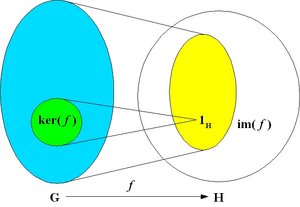 theory which create alternate coherent, ‘semiotic’ number systems with different rules than ordinary numbers – to language. Hjelmslev is not concerned in this work with actual existent languages, but the potentials of language as such. To use a term employed by Vilem Flusser, Hjelmslev’s project is to ask what the ‘program’ of language can do, what its virtualities are capable of. He wants to know what language, in the broadest possible sense, might be. While his inquiry thus is about language, it is also about much, much more. It is about the production of meaning as such.
theory which create alternate coherent, ‘semiotic’ number systems with different rules than ordinary numbers – to language. Hjelmslev is not concerned in this work with actual existent languages, but the potentials of language as such. To use a term employed by Vilem Flusser, Hjelmslev’s project is to ask what the ‘program’ of language can do, what its virtualities are capable of. He wants to know what language, in the broadest possible sense, might be. While his inquiry thus is about language, it is also about much, much more. It is about the production of meaning as such.
And this is precisely why Deleuze and Guattari find Hjelmslev so useful as a counterpoint to Saussure. Using Hjelmslev, they are able to to postulate that any two layers of material, linked in such a manner that one expresses the other, indicate a form of semiotic coupling. This is precisely why Manuel Delanda, in his Thousand Years of Non-linear History, is able to speak of the production of strata in layers of rock in semiotic terms. Hjelmslev’s semiotics is able to be, perhaps beyond his intentions, fully material. While this may have been latent in his attempt to link the study of languge which the abstraction of modern math (and its desire to imagine what any potential number system whatsoever, as pure abstract combinatory, might be able to do), for whatever it is worth, it does not seem to be his explicit intention.
The aspects of Hjelmslev’s theory that give it the flexibility to be adapted to Deleuze and Guattari’s project of materializing semiotics are two-fold. Firstly, Hjelmslev does not distinguish in kind between his two layers of semiotic production. Anything can express itself through anything else. The mode of expression he is interested in, however, is more than just the sort of simple, indexical expression we see at evidence when a foot leaves an imprint on the sand as a footprint. For such simple indexical signs are not language. No, language implies a code, and therefore, a second-level mediation. The difference between signs and language is that language requires a meta-system in order for any particular part to be meaningful. So long as there is a code of this sort, and any two layers of in which one 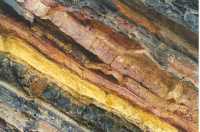 layer expresses another, there is language. The layer that is being expressed is called the ‘content’, and the level doing the expressing is called the expression. Unlike Saussure, who links one of these layers to matter (signifier) and the other to mind (signified), for Hjelmslev, it hardly matters which is material or otherwise. All that matters is the relationship. It is this which gives rise ultimately to Deleuze and Guattari’s notion of ‘disjunctive synthesis’, the gap between series of elements which gives rise to new forms of connection, a gap which many theorists have conceptualized as that which is indicative of the presence of media as such.
layer expresses another, there is language. The layer that is being expressed is called the ‘content’, and the level doing the expressing is called the expression. Unlike Saussure, who links one of these layers to matter (signifier) and the other to mind (signified), for Hjelmslev, it hardly matters which is material or otherwise. All that matters is the relationship. It is this which gives rise ultimately to Deleuze and Guattari’s notion of ‘disjunctive synthesis’, the gap between series of elements which gives rise to new forms of connection, a gap which many theorists have conceptualized as that which is indicative of the presence of media as such.
The second thing that makes Hjelmslev’s semiotics useful for Deleuze and Guattari is that while it might appear binary on the surface, it is ultimately traidic, and in fact, fractally triadic in nature. This of course needs some explaining. Binaries are static, and tend towards repetition of a the same no-win set of options, while triads are fundamentally unstable, they tend towards process rather than stasis. For Hjelmslev, within each layer of his semiotic relation (namely, content and expression), there is itself a division, but this time into three parts – content, expression, and a third part, namely, purport.
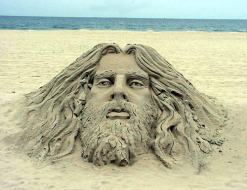 If content and expression roughtly relate to the matter and form of a sand castle, then purport, roughly speaking, is like the sand. Or, take the human sensorium. Our senses express the world, and in this sense, our sense impressions are the expression layer of the content layer which is the sensory input recieved by our sense organs from the outside world. But each of these layers – our sense impressions versus to actual exterior stimuli that create them – are themselves made up of layers. In the case of the exterior stimuli, there is the matter of the sense data (the air and light particles recieved by our senses), which express a content, in this case, the structure of the light and sound waves from which we extract ‘meaning’. Likewise, our sense impressions can be similarly divided into layers of expression (namely, the neural patterns they create in our brains) and that which they express (namely, colors, sounds, etc.). Here we see the expression and content level of the content, and the expression, respectively. And we could continue this division potentially ad infinitum, in a sense, fractally.
If content and expression roughtly relate to the matter and form of a sand castle, then purport, roughly speaking, is like the sand. Or, take the human sensorium. Our senses express the world, and in this sense, our sense impressions are the expression layer of the content layer which is the sensory input recieved by our sense organs from the outside world. But each of these layers – our sense impressions versus to actual exterior stimuli that create them – are themselves made up of layers. In the case of the exterior stimuli, there is the matter of the sense data (the air and light particles recieved by our senses), which express a content, in this case, the structure of the light and sound waves from which we extract ‘meaning’. Likewise, our sense impressions can be similarly divided into layers of expression (namely, the neural patterns they create in our brains) and that which they express (namely, colors, sounds, etc.). Here we see the expression and content level of the content, and the expression, respectively. And we could continue this division potentially ad infinitum, in a sense, fractally.
But where is the purport? Purport is the slippery, unstable term in Hjelmslev’s traid, and perhaps that which makes his theory truly unique. Purport is the pre-symbolic potential for symbolization from which expression and content carve their meaningful relations. In language, purport is all the possible sounds that could be made use of for language, which is then carved into phonemes. Or it is all the potential graphic configurations, which are ultimately reduced to the choice of grahpemes used in a linguistic code. On the level of meaning, it is all the possible meanings available, as such, from which a select group are chosen in any given code. Purport is the semiotic virtual relam of which any given semotic actualizes only a small part.
If we return to the realm of the senses, we see that purport lines up with all the possible data our senses could be attuned to, and all the sense impressions to which these could potentially give rise. As organisms of a specific evolutionary history, however, we only have a certain set of sense organs. We have eyes tuned to only a limited range of electromagnetic 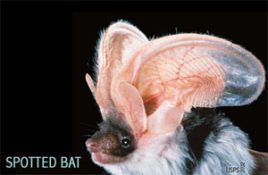 radiation. But what if we could see microwaves, see radiowaves? Bats can ‘see’ sonar. We will never know what sensations arise from ‘seeing’ sonar. But had we different sense organs, we might carve the world up differently. We might extract different sensations from the data of the world. Purport is that which is within all semiotics, but fully contained in none. It is the potential of media to exceed themselves, continually, as new ways of actualizing the given world.
radiation. But what if we could see microwaves, see radiowaves? Bats can ‘see’ sonar. We will never know what sensations arise from ‘seeing’ sonar. But had we different sense organs, we might carve the world up differently. We might extract different sensations from the data of the world. Purport is that which is within all semiotics, but fully contained in none. It is the potential of media to exceed themselves, continually, as new ways of actualizing the given world.
Hjelmslev famously describes the slicing up the world by a given code as being like a fishing net or skein casting a shadow on the world. Purport is like the sand given shape by the lines of this net, and the blocks of sand carved by this sand are the chunks of the world we call meaning. And yet, we could have also made a sandcastle, rather than just rigid blocks of sand . . .
Animals develop sense organs as means to open the world to themselves,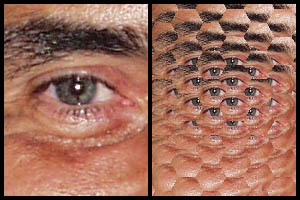 these are their media interfaces (and each, to use a term popularized by Bolter and Grusin, fractally ‘remediate’ yet another layer all the way down in a potentially infinite chain). Jakob von Uexkuell, the famed Estonian naturalist, famously described the worlds experienced by animals via their ‘carving’ of the world into such bits as an animal’s Umwelt. He describes, for example, how in ‘tick world’ – the world percieved by a tick – there are only two axes of interest, namely, the intensity of smell of a given animal passing below, and the distance. By measuring these factors, the tick can determine when to jump from a tree in order to maximize its chances to land on a deer below. Uexkuell then draws a picture of what he imagines ‘tick world’ to feel like from the inside. It is a world whose topology is shaped by only two zones of interest, and these compse the entire sensorium of the animal. All other sensory modalities, such as sensations of touch on its own body, are completely secondary to these larger interests that occupy more of its investment in its world.
these are their media interfaces (and each, to use a term popularized by Bolter and Grusin, fractally ‘remediate’ yet another layer all the way down in a potentially infinite chain). Jakob von Uexkuell, the famed Estonian naturalist, famously described the worlds experienced by animals via their ‘carving’ of the world into such bits as an animal’s Umwelt. He describes, for example, how in ‘tick world’ – the world percieved by a tick – there are only two axes of interest, namely, the intensity of smell of a given animal passing below, and the distance. By measuring these factors, the tick can determine when to jump from a tree in order to maximize its chances to land on a deer below. Uexkuell then draws a picture of what he imagines ‘tick world’ to feel like from the inside. It is a world whose topology is shaped by only two zones of interest, and these compse the entire sensorium of the animal. All other sensory modalities, such as sensations of touch on its own body, are completely secondary to these larger interests that occupy more of its investment in its world.
 This of course is likely to remind one of the maps of the relation between the brain and sensory cortex drawn by neurologists to teach students the relation between the number of nerve cells we assign to given regions of our bodies. For example, if the size of our body parts were determined by the number of neurons we spent processing data from our hands or eyes, they would be much larger than less sensitive parts our bodies, such as our touch sensors on our elbows. If we drew the inner world of a human, it would have huge eyes, just as the inner world of a dog would have an enormous nose.
This of course is likely to remind one of the maps of the relation between the brain and sensory cortex drawn by neurologists to teach students the relation between the number of nerve cells we assign to given regions of our bodies. For example, if the size of our body parts were determined by the number of neurons we spent processing data from our hands or eyes, they would be much larger than less sensitive parts our bodies, such as our touch sensors on our elbows. If we drew the inner world of a human, it would have huge eyes, just as the inner world of a dog would have an enormous nose.
We capture only those aspects of the world we are attuned to, and these zones are determined by the ways in which our media ‘capture’ parts of the world, discard others, by means of the process of the ‘capture’ of sense from the purport of the world. 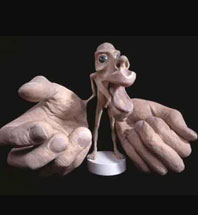 And as Jonathan Beller has argued, following Marx, capital has greatly modified the sensorium. What sort of virtual organs has digital capital developed for us today? We do best to keep in mind that we miss much if we only experience the world via the organs capital has fashioned for us.
And as Jonathan Beller has argued, following Marx, capital has greatly modified the sensorium. What sort of virtual organs has digital capital developed for us today? We do best to keep in mind that we miss much if we only experience the world via the organs capital has fashioned for us.
And yet forgetting that purport, and the potential for other modalities of capture, is there in the first place, is only one of the dangers at issue here. For according to Deleuze and Guattari, there is also the issue of the ethics of capture. In their text Thousand Plateaus, there is a chapter called ‘Apparatus of Capture.’ The chapter is mostly on sovereignty, how varying forms of states, and finally capitalism, work to ‘capture’ the energies of society, make them productive and orderly, and find ways to reduce their production of ‘wild’ forms of value, in order to reduce the valuation of production to only those forms which are fully controlled by centralized forms of power, from the king to the capitalist axiomatic. At all turns the issue is to take unformed potential – for example, land – and to reduce it to what is standard, calculable, and ultimately, that from which surplus can be drained – for example, rentable land. Once the value of land is not to produce joy or feed your animals or grow oranges, but rather, to produce rent, it has been effectively been ‘captured’ by the powers that be. Contemporary Marxist discourse would refer to these notions by means of terms such as monetarization, real subsumption, value capture, etc.
In their earlier work Anti-Oedipus, we see a related issue with their term ‘anti-production.’ Anti-production is the term they use to indicate bits of the productive process which have been turned against pure production and multiplicity per se, and used to limit and thereby give structure to production so as to, by means of inhibition, increase the complexity of production. What is perhaps paradoxical here is that it is only by turning a bit of life against life that life can become more complex. Limitation gives rise to creativity.
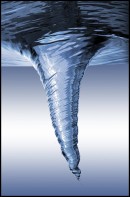 And in the terms of Thousand Plateaus, it is precisely these bits of captured, static productive forces, structures of anti-production, which produce what they call ‘strata’ – namely, layers within the more general field of production. Strata provide for order, and in the metaphysical structures described by Deleuze and Guattari, it is the static which allows the fluid to take shape, and only by means of this interplay does novelty enter the world. Pure fluidity, despite the radical freedom it brings, excludes the ability of the unformed to take any particular form. We see this played out, in a manner which dematerializes the notion of structure, in F.W.J. Schelling’s favorite example, namely, that of a vortex. We see a similar dynamic at work in contemporary physics via quantum phenomenon – quantum virtualities can be multiple places at one, over wide expanses of time and space, but when forced to actualize, quantum virtualities lose their ability to be so many things at once. That said, it is only by this process of taking a given, definite form, that molecules can eventually be built. The fall from virtuality into form allows for the eventual production of new forms of virtuality.
And in the terms of Thousand Plateaus, it is precisely these bits of captured, static productive forces, structures of anti-production, which produce what they call ‘strata’ – namely, layers within the more general field of production. Strata provide for order, and in the metaphysical structures described by Deleuze and Guattari, it is the static which allows the fluid to take shape, and only by means of this interplay does novelty enter the world. Pure fluidity, despite the radical freedom it brings, excludes the ability of the unformed to take any particular form. We see this played out, in a manner which dematerializes the notion of structure, in F.W.J. Schelling’s favorite example, namely, that of a vortex. We see a similar dynamic at work in contemporary physics via quantum phenomenon – quantum virtualities can be multiple places at one, over wide expanses of time and space, but when forced to actualize, quantum virtualities lose their ability to be so many things at once. That said, it is only by this process of taking a given, definite form, that molecules can eventually be built. The fall from virtuality into form allows for the eventual production of new forms of virtuality.
All of which brings us back to the issue of apparatus of capture. If capital is the most recent form of the more traditional, sovereign forms of apparatus of capture, all of these modalities need to be seen as offshoots of the organization of potential (and therefore the potential to give rise to complexity) at work in the anti-production that gives rise to strata. What is excessive in these soverign apparatus of capture, however, is that they do not act to reduce virtuality at one level to give rise to it in greater measure on another (complexity), but rather, to reduce proliferation in general to maintain the current order at a given level. Such conservative forces ultimately are unsustainable, leading to systemic forms of crisis.
All of which brings us back to the issue of the ethics of capture. Firstly, we must remember that any semiotic, linguistic, expressive (in this sense) modality is simply one actualization of the purport of the world to which it gives shape. To use terms pioneered by Schelling, and perfected by Marx, we must not forget the process because we were seduced by the product.
Secondly, this is not enough. For paranoid forms of power are always aware of the potential for ‘something more’. They fear it, and continually attempt to anticipate its moves, its attempts to destabilize static forms of power that aim to reproduce themselves.
Rather, what is needed is a sustainable relation to purport. If we dissolve all current structure in the effort to gain access to what is beyond current forms of mediation, we risk overload, and dissolution of all forms of structure. We err also, however, if we pursue the purely static. Life exists in between.
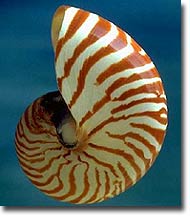 Gilbert Simondon, another key influence on Deleuze, describes life itself as that which exists between petrification via actualization, and fluidization via disssolution (or revirtualization). Life is the inbetween, the hesitation between these two poles. To put this in terms used by complexity theorists, complexity thrives ‘at the edge of chaos’ – between too much order and too much freedom. Freedom is reduced to give rise to new levels of freedom at higher levels, but care must be taken not to ‘botch’ in either direction, which Deleuze and Guatarri call the ‘paranoid’ and ‘schizo’ poles of existence.
Gilbert Simondon, another key influence on Deleuze, describes life itself as that which exists between petrification via actualization, and fluidization via disssolution (or revirtualization). Life is the inbetween, the hesitation between these two poles. To put this in terms used by complexity theorists, complexity thrives ‘at the edge of chaos’ – between too much order and too much freedom. Freedom is reduced to give rise to new levels of freedom at higher levels, but care must be taken not to ‘botch’ in either direction, which Deleuze and Guatarri call the ‘paranoid’ and ‘schizo’ poles of existence.
Such an approach would be, for me at least, the starting place whereby we could begin to think what is at stake in an ethics of capture in relation to media modalities. Of course, some modalities can go into crisis with relatively few consequences (ie: the current total dissolution of the music recording industry in the west), while others have enormous consequences (there are innumerable examples of where crises of media/semiotic systems, in their many varieties, have created crises of power on a massive scale). The question is one of tactic and strategy, and knowing the how and then when. But ethics is aimed at helping us relate to ourselves in such situations, rather than give us a precise code of acts (a morality). And in our media age, what we need to begin to think, I’d like to suggest, particularly if we are to address media from the wide potential perspective of a mediology, is what might be at stake with an ethics of media practices.

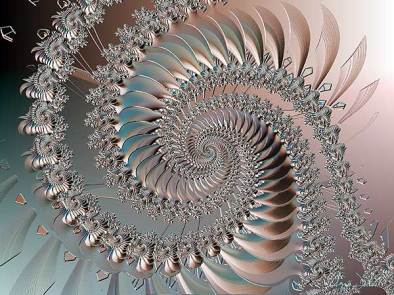

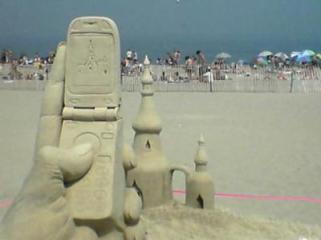
[…] More on Apparatus of Capture: Carving the World at the Seams with the Semiotics of Hjelmslev and Ue… […]
New ‘Mini-Essays’ Tab on the Blog « Networkologies said this on October 16, 2010 at 7:53 am |
[…] as double-articulation). For in fact, as one reads the lecto-sign chapter, there are increasingly Hjelmslevian qualities to his statements, even if Deleuze only provides us with hints as to the fact that this […]
Reading Cinema II: Noosigns, Lecto-signs, and the Cinematic Worldcreating for a People Yet to Come « Networkologies said this on May 1, 2011 at 12:12 am |